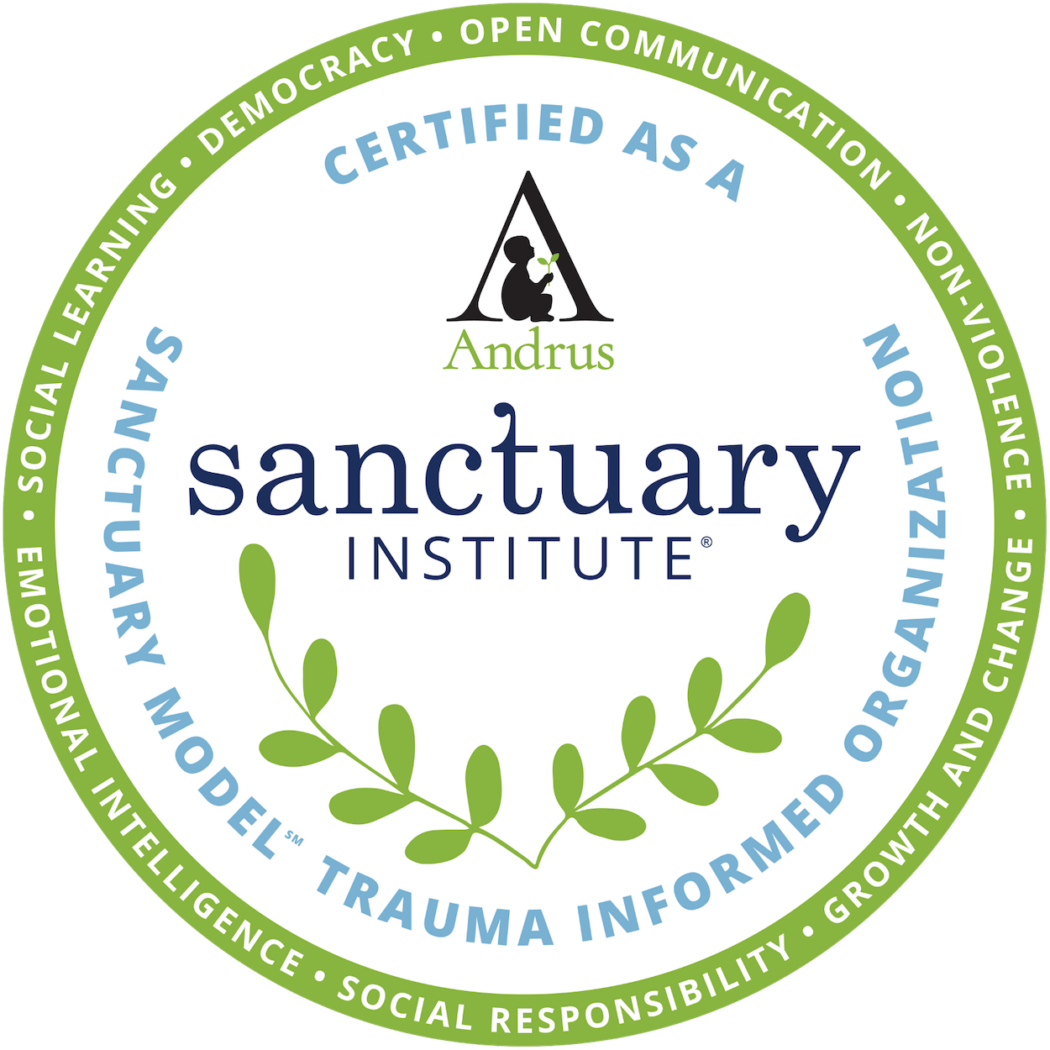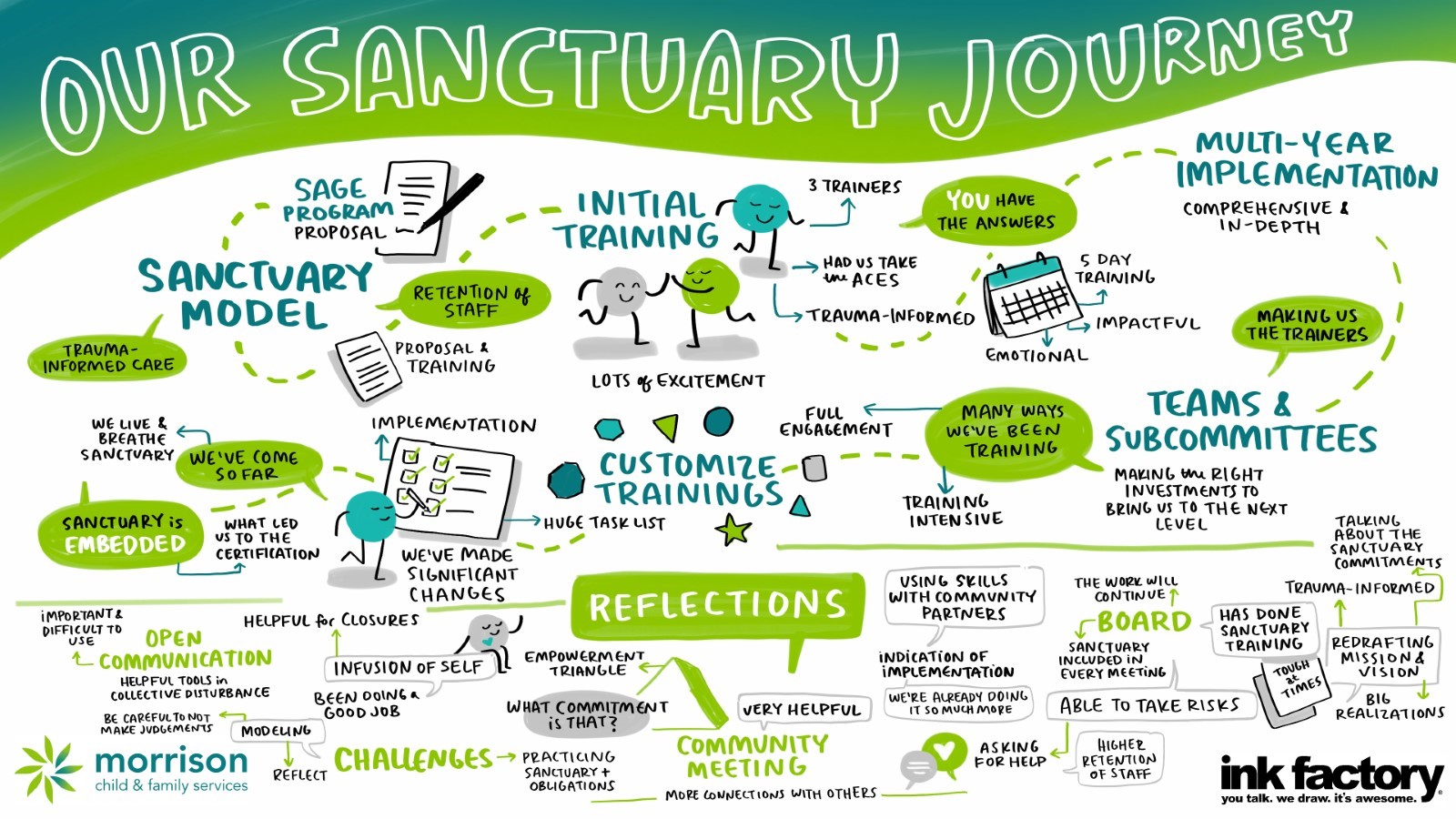
We believe a trauma-informed, equity-centered organization understands and acknowledges the impact of vicarious trauma and systemic oppression on everyone’s lives. We also believe that to care for others with presence and reverence, our staff must feel that for themselves.
Pillar One
Trauma Theory
Trauma Theory is the foundation for creating a trauma informed equity centered environment. Simply put, trauma, adversity and chronic stress are universal to the human experience and affect individuals and organizations in predictable ways. The understanding of the ways in which trauma impacts functioning and health and the use of the Sanctuary Model to mitigate these affects are at the core of the Sanctuary Model.
Pillar Two
The S.E.L.F. Framework
The SELF model organizes the way in which we think about individuals, organizations and treatment. It provides us with a shared language, a framework for treatment and an important problem-solving tool.
Pillar Three
The Eight Commitments
The Eight Commitments reflect the value system of the Sanctuary Model which guides our individual and organization beliefs, practices and policies. They are:
Non-violence: Providing physical, emotional, social, and moral safety for all.
Emotional Intelligence: Managing feelings well for the care-of-others and self.
Social Learning: Practicing the utmost respect for the ideas of everyone.
Democracy: Having shared decision making whenever possible.
Open Communication: Saying what we mean, without being mean as we say it.
Social Responsibility: Ensuring teamwork that includes everyone’s contributions.
Growth and Change: Co-creating transformation for a hopeful future.
Commitment to Equity: Ensuring that all feel included and have what they need to survive and thrive.
Pillar Four
The Sanctuary Tools
The Sanctuary® Toolkit is a set of practical and simple interventions that reinforce the language and philosophical underpinnings of the Sanctuary® Model. Some elements of the toolkit include:
Community Meetings
All meetings begin with this grounding and connecting practice to offer and receive care. Everyone is invited to answer three questions designed to promote feelings identification, a focus on future, and a connection to community.
S.E.L.F.
An acronym which stands for safety, emotional management, loss and future. These four components are the organizing framework for treatment planning, community conversations and collaborative decision-making, and allow providers to focus on the most important aspects of helping people heal from trauma in a simple & accessible way.
Safety Plans
Visual reminders of emotion management practices represented as a list of activities, techniques, or skills to be used in situations that may activate strong feelings and inappropriate behaviors.
Self-Care Planning
The routine planning and practice of a set of activities and techniques which can help prevent compassion fatigue and mitigate the effects of stress.
Workplace Wellness
The organizational commitment to encourage the practice of activities and techniques individually and as a team that promote self-awareness, prevention, stress relief, connection and support.
Red Flag Reviews
A response to critical incidents or circumstances that follows a group protocol and focuses on reflection, holding multiple perspectives and is solution-focused.
Core Team
The Core Team leads implementation and embedding of the Sanctuary Model. It provides a forum for discussions and feedback to influence the overall agency decision making processes with an emphasis on aligning processes and outcomes with the Sanctuary Model principles.






